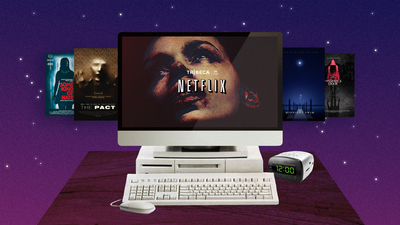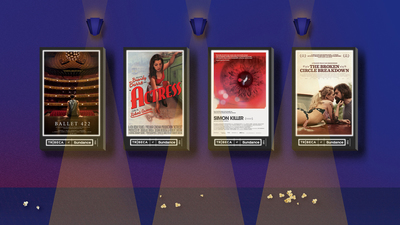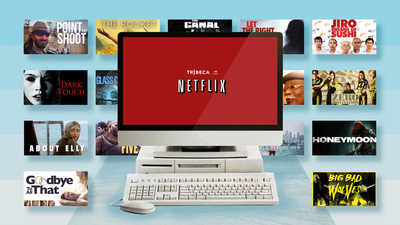
BY RICHARD GREENFIELD |
Movie Industry Must Bring The Theater "Home"
Richard Greenfield and Brandon Ross of BTIG explain why windows need to collapse in 2012.

Photo credit: Flickr
In a rapidly evolving media world, where HDTV penetration now exceeds 70% and the average US living room TV sold is 44″, the concept of forcing consumers to attend/pay for a movie in a theater for the first three-four months of a film’s lifespan feels increasingly archaic. The overwhelming majority of multichannel video homes are capable of utilizing video-on-demand, with the exponential growth of IP-enabled TVs (directly or via third-party devices); not to mention the growth of web-enabled iPads that have a sharper screen than any TV set. The stage is set for the “home” to become the new “theater.”

Why Buy When You Can Rent?
Falling DVD sales and consumers’ lack of interest in buying movies digitally (Electronic Sell-Through, EST) has received most of the blame for Hollywood’s financial problems. Hollywood is hoping that expanding the functionality of digital content, meaning a cross-device, cloud-based storage system for movies (Ultraviolet), will invigorate interest in buying movies. Unfortunately, the fundamental issue is that consumers no longer need to own content.
Movie Attendance in Secular Decline
Hollywood’s problems go beyond declining interest in buying movies—consumers are also less interested in going out to the movies. The annual number of movies attended per capita has dropped from 5.1 to 3.9 over the past decade. Simply put, consumers are watching fewer movies in their initial release window. While movie going has rebounded in the early part of 2012, we believe this is an exception to a secular trend. Attendance declines have been masked by pricing increases, especially from 3D pricing. With 3D no longer a growth vehicle, we believe the secular attendance trends will be increasingly troublesome.
The Problem: Technology is “Raising the Entertainment Bar”
The downward trend in movie attendance and DVD purchases are really the result of one, simple catch-all word: “technology.” Technological advances in home theater, especially since 2005 have shrunk the difference between watching movies in the home and watching in the theater. Average television size growth hit a huge inflection point with the flat panel revolution, with the average television purchased for a US living room now a 44″ HDTV screen.

Broadband has also created competition for a viewer’s time and enabled new ways to experience media. Netflix streaming has brought large quantities of content to consumers at low prices, while creating competition between first-run “fresh” content and long-tail, catalog content. Netflix has also enabled the rise of the serial drama, creating even more competition for movies. Netflix not only gives consumers a way to watch hours and hours of high quality serial dramas that they have never seen before, but it provides a syndication outlet for serial dramas, allowing networks and studios to invest more in the production of quality content. Add to Netflix, online content options such as Hulu, iTunes, Amazon Prime Instant Video, Vudu, etc.
While video-on-demand (VOD) via a multichannel video programming distributor (MVPD) has become nearly ubiquitous over the past decade, navigational interfaces, depth of content and video quality have only recently begun to take a step-function forward. The HBOGO experience is night and day compared to HBO-on-Demand and Xfinity-on-Demand via the XBox with Kinect enables you to use your voice and hand gestures to navigate deep menus of content versus a clunky, remote control with arrow keys and color coded buttons to navigate a Comcast set-top box.
The confluence of these technology catalysts has “raised the bar” for consumers to either leave their home and buy a movie ticket or to buy a movie on DVD or digitally. We expect the bar to move notably higher over the next few years as an increasing percentage of TVs become IP-enabled. Studios need to understand the “new” consumer and technological paradigms and work with them, not against them.
Academy Awards Crystallizes Hollywood’s Windowing Problem
On February 27, 2012, the night after The Oscars, we received an e-mail blast from Vudu highlighting the Academy Award-winning films available on Vudu. While films such as Hugo and The Help were available immediately, films such as The Descendants, The Muppets, The Girl with the Dragon Tattoo, The Iron Lady and The Artist would not be available for rental or purchase until mid-March to late-April.

• Prior to The Oscars, The Artist generated $32 mm of box office. Following the Oscars, the film re-expanded into theaters reaching a peak of 1,700 screens but only generated an incremental $12 mm of box office. Even with the added Academy Award thrust, the film was only seen in theaters by 5 mm people in the US (1.6% of the population).
• Similarly, The Descendants generated $78 mm of box office prior to the Oscars. Following the Oscars, the film generated only $5 mm more in box office, for a total of $82 mm, implying the film was viewed by less than 10 mm people in the US (just over 3% of the US population).
While both The Artist and The Descendants will generate incremental revenues as they are released into the home entertainment channel (DVD, VOD, iVOD), we believe studios are simply not maximizing the profit potential of a film by maintaining an antiquated sequential release pattern, a.k.a windowing.
With consumers increasingly unlikely to buy a movie ticket in the theater and/or end up buying the content on DVD or digitally, maintaining a three-to-four month window between theatrical release and home video release is illogical. To make matters worse, studios are essentially marketing the same movie twice - with each set of marketing generating a lower return than in the past. Finally, movie industry piracy is flourishing during the two-three month period of time between when a movie has left most theaters and the time it reaches the home entertainment market.
BTIG’s Solution: Enable Consumers to Pay for Access vs. Ownership
If the bar is higher for consumers to leave their home and go to a theater, why not bring the theater to consumers?
We believe there would be substantial consumer interest in offering movies in the home four weeks after their theatrical release at $20-$25, and there could be meaningful interest in offering movies day-and-date into the home at prices as high as $50 (not everyone bought a ticket to a Saturday night boxing match or a WWF event, with many choosing Pay-Per-View and subsequently VOD to access the content). Furthermore, releasing movies earlier at home should not simply be rental/VOD, but rather offer consumers the ability to own a digital copy (Ultraviolet or iTunes) for a modest premium (sub $10 above the VOD price).
• The rationale behind four weeks is simply that most movies have completed the overwhelming majority of their theatrical run within four weeks (Avatar is a dramatic outlier).
• We believe you have a much better chance of convincing someone to spend $20 to access a movie four weeks or less after its release than you do four months. Enable consumers to pay for “access” to content earlier vs. “ownership.”
Consider that in addition to the cost of a movie ticket and the possible inconvenience of leaving the home, there are meaningful expenses for the consumer in going to the movies (Fandango fees, way over-priced concessions, parking, $5/gallon gas and often times babysitting); none of which benefit studio profitability. While we still expect a robust movie theater going public, enabling consumers to leverage their in-home technology and reduce a wide array of non-movie costs should fuel consumer spending on movie content itself to the direct benefit of studios.
• It is worth remembering that movie studios keep only half of each movie ticket, but would keep 80%-plus of VOD/iVOD transactions.
We also believe eliminating the two-three month dormant period for movies between theatrical and home entertainment would significantly reduce the leakage to piracy - giving those that want to watch at home a high-quality alternative to theft.
Risks/Problems with Collapsing Windows
What to Do About the Exhibitors? We appreciate the importance of remaining on “good” terms with long-time partners, meaning movie exhibitors. That being said, movie studios need to focus on generating returns on their investment that are acceptable to justify their continued investment in making movies.
First and foremost, movie studios need to embrace consumer and technological trends, even if it applies pressure to the movie exhibition industry. Exhibitors have been layered with too much debt by private equity firms and pushed the consumer far too hard from a pricing standpoint, both in terms of tickets and concessions; with 3D-pricing the latest abuse.
The collapsing of the window between theatrical and home entertainment has been quite successful for an array of independent, non-major films. Unfortunately, the major Hollywood studios that attempted to “trial” or “test” releasing movies earlier have succumbed to the aggressive push back from exhibition chains. The time has come for every studio to stop trialing and permanently collapse windows as the new Hollywood business model. Exhibitors will acquiesce as they simply cannot afford to be without content from Hollywood. It is time for studios to play offense!
Will Day and Date Increase Piracy? The other risk/problem created by collapsing windows is that going fully day-and-date could increase the risk of piracy during the initial theatrical run. Waiting one month would eliminate the vast majority of that risk. Yet, we cannot help but feel like the competition for consumers’ time as technology improves poses a far larger threat than piracy. Studios need to take risks today, even if there is some degree of cannibalization to build a healthy movie industry for the future.
Important Disclosure and Analyst Certification
Note: This Blog was simultaneously published on the BTIG Research Blog.

